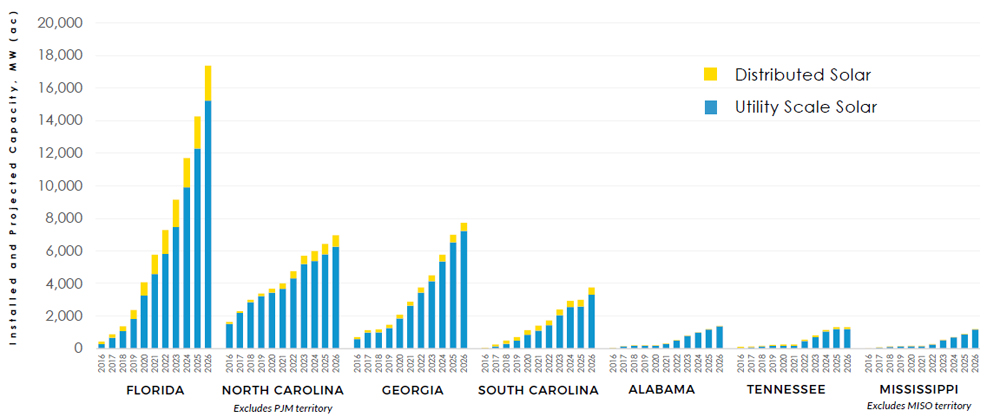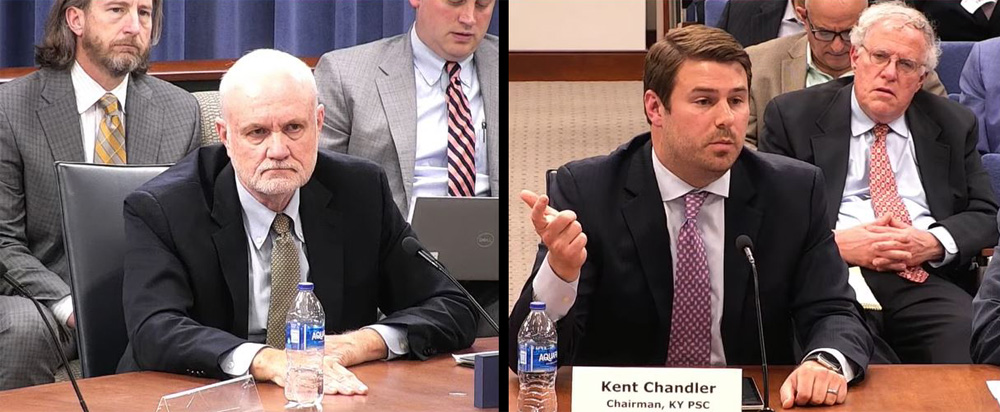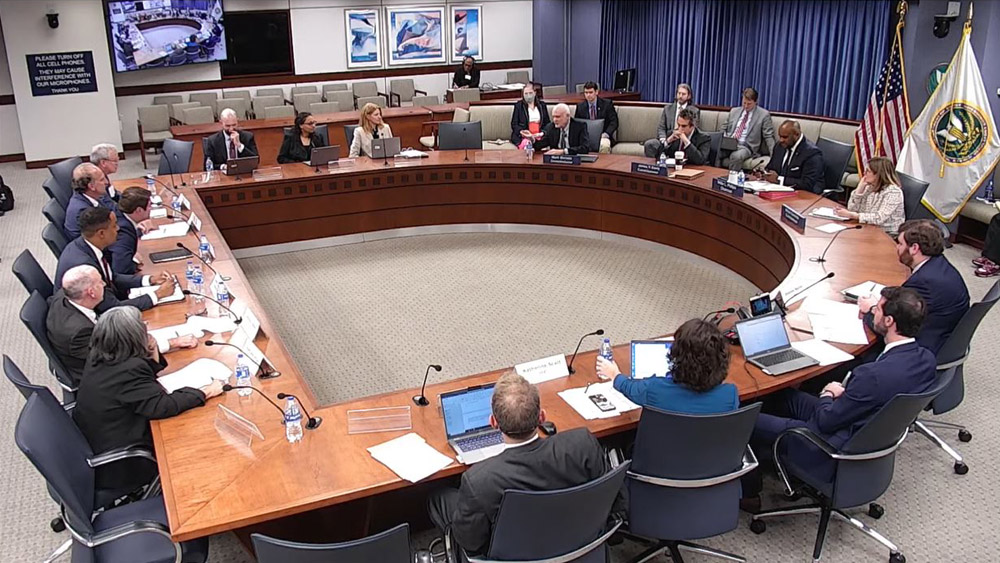ARLINGTON, Va. — Interconnection requests continue to grow, and grid operators have had to adopt waves of changes to try to keep pace with them over the years, experts said at Infocast’s Transmission & Interconnection Summit on Monday.
Lawrence Berkeley National Laboratory’s Joseph Rand opened up the conference going over the latest national queue figures he helped produce, which show 2,000 GW waiting to connect to the country’s grids. (See LBNL: Interconnection Queues Grew 40% in 2022.)
“Interconnection requests are growing across the country, in really every grid operator region that we analyze,” Rand said.
One exception in 2022 was CAISO, where it had to pause taking on new projects after a massive spike in requests in 2021. The ISO is processing its first batch of interconnection requests since then, and Rand said it is “another massive one,” which will turn that regional trend around.
While the queues signal plenty of interest in building out renewables, which are the dominant sources for new generation everywhere, most of the projects will not get built.
“People might say, ‘Well, maybe the queues are working the way they should: We’re encouraging generators to come online where it makes sense, in terms of the transmission system where there’s capacity on the system, and where it’s kind of most economically viable to do so,’” Rand said. “But on the other hand, I think it’s a little bit concerning to see completion rates as low as 20% and, by capacity, only about 14%.”
FERC has a pending Notice of Proposed Rulemaking on interconnection queues that would update its pro forma rules from a serial, first-come, first-served system to a cluster-approach that favors projects that are ready to go, Rand said. (See FERC Proposes Interconnection Process Overhaul.)
Some of the changes proposed by FERC have been in place in different markets for years, and they have had to continually improve their processes as the queues grew, he said.
MISO went to a cluster process 15 years ago, and it instituted a first-ready, first-served system years ago with an additional seven waves of changes since then, said Grid Strategies Vice President Richard Seide.
“So, one clear takeaway that everyone should understand: Queues are a work in progress,” he added.
Queue reform is a complex topic, so it makes sense that grid operators would take their time and tweak rules over years to see what works, said AES Vice President of Strategic Development Alexina Jackson.
“I really commend the last panel for recognizing that what we’re doing should be iterative,” Jackson said. “Queue reform is challenging.”
While FERC’s proposed revisions — and the changes PJM recently instituted that are largely in line with the NOPR — should speed up the process, Jackson said it was important to move some of the work around queues into the planning process. (See FERC Approves PJM Plan to Speed Interconnection Queue.)
The energy transition is in the queues, as the resources there represent the clean energy mix the grid is moving toward, said RMI Manager Katie Siegner. She agreed with Jackson on FERC’s NOPR and PJM’s revisions.
“All of that is a really promising signal that we’re finally mustering the will and the resources to tackle the interconnection backlog that has become one of the thorniest challenges in the transition to a more carbon-free electricity mix in the U.S.,” she added.
PJM’s move to a cluster approach in studying projects in the queue will help move them forward by cutting the costs of network upgrades, but Siegner argued more would be needed if the RTO were going to meet the demand of state renewable portfolio standards, corporate clean energy contracts and federal policies pushing renewables.
Planning Transmission to Clear the Queues
Beyond connecting individual projects, the grid is forecast to have to double or even triple in size by midcentury to meet decarbonization goals in the power industry, while electrifying others, and that is a huge task, said Michael Colvin, the Environmental Defense Fund’s California energy program manager. That transmission expansion should include trunk lines out to renewable, resource-rich regions to bring them to market.
CAISO released a 20-year transmission plan that looked ahead to see how the grid would need to evolve as the state meets its clean energy and climate targets, said the grid operator’s vice president of infrastructure and operations planning, Neil Millar.
The 20-year plan was voluntary, but planners used some of its suggestions, and the extra information helped give the industry a lot more comfort that everything was moving in the right direction, Millar said.
CAISO went to a cluster approach back in 2010, and it has worked on reforming its queue every couple of years since then, said LS Power Senior Vice President Sandeep Arora. But projects entering the queue today probably won’t be built until the end of the decade.
“There’s only so many real estate opportunities, and every developer is after those same opportunities, right?” Arora said. “So, the cost of doing businesses is going up on the real estate side.”
Real estate is a major issue in developing new resources in the Northeast, especially anything along its coasts, with the high land values and the abundance of historic and cultural sites, said POWER Engineers Senior Project Engineer Ken Fortier. Given those realities, it makes sense to plan transmission corridors that can accommodate future generation to minimize the overall permitting process.
“We want to make sure we’re not going back and having to knock on those same landowners’ doors and say, ‘Hey, we built this line five years ago; I guess we’re going to be building it again,’” Fortier said.
The planning process in New England would have to be updated for such lines to be built, because right now it lags behind other regions, such as New York, in terms of planning for public policy, said NextEra Energy’s Michelle Gardner.
Demand is expected to grow in New England by 40% by 2035 and 72% by 2040 because of electrification, all while about 32,000 MW of renewables remains in the queue, said Eversource Energy Vice President of Transmission Policy Vandan Divatia.
“We can’t look at these in silos; we’ve got to try to co-optimize,” he added.
A major issue is who is going to pay for all the new transmission. Divatia argued that it should not be left to renewable energy developers; expanding the grid has societal benefits, so consumers should help pay, which will speed up the transition to cleaner energy. Eversource is doing that on Cape Cod, where its customers have paid for the equivalent of a 115-kV line, but it is building a 345-kV line with the difference footed by an offshore wind farm.
New England’s grid can handle about 5 GW of offshore wind without major upgrades, and the states have contracted for enough wind that now is the time to start thinking about expanding the grid to accommodate more, Gardner said. That could be handled by the states coming together and working with ISO-NE to figure out what upgrades are needed to make their offshore wind procurements feasible, she added.
The transmission planning side is generally more important than the queue in New England, Gardner said. While some projects have been stuck in the queue for years, they include wind farms in Northern Maine that face huge costs to connect.
“There may be some projects in the queue now that have been here for a long time, but it’s not because the queue is broken,” Gardner said. “It’s because they just can’t get down to the load. But projects in Connecticut or Massachusetts generally have processed appropriately through the ISO study.”
MISO-SPP JTIQ
In parts of MISO and SPP, all of the projects are impacted by other “affected systems,” which the two hope to overcome through the Joint Targeted Interconnection Queue (JTIQ) study, said NextEra Energy’s Matt Pawlowski.
“We have a lot of projects in both regions,” Pawlowski said. “We’ve had a lot of issues with affected systems and the timelines for affected-system studies that don’t align with our commercial time frames or the interconnection studies in each of the regions. So, if you have an SPP project, [you’ve] got to be hindered by the fact that there’s affected systems that don’t necessarily align with the study time frames in SPP and vice versa in MISO.”
Those delays can cause power purchase agreements and generation developments to be canceled, he said.
The JTIQ will lead to major, central lines designed to resolve any affected-system issues in northern MISO and SPP, said Sunflower Electric Power’s Clifford Franklin. In the past, the cost of dealing with affected systems has been so high that individual projects have not been able to bear it.
The plan invests close to $1 billion in major transmission upgrades, and while 90% of the cost is expected to be picked up by generation developers, load could be on the hook for cost overruns. That has led to some opposition, Franklin said.
Planning lines to deal with such issues will give project developers the certainty they need to move forward. “This stability of the rate, the entry fee, is what is hoped will reduce backlogs,” Franklin said.
Speculative Projects?
Projects have often pulled out of queues when faced with the need to fund transmission upgrades that erase any chance for them to profit, but some developers on the panel argued that they have reasons other than hunting for the cheapest grid connection to file “speculative projects.”
NextEra had some of those projects looking for a cheap connection back when the costs of doing so were low, but the nation’s largest renewable developer still has plenty of projects — for different reasons, Pawlowski said.
“Those speculative projects needed to be in there,” Pawlowski said. “And the reason why they needed to be in there is because if it’s going to take me five to six years, or even seven years, to go through the interconnection queue, I cannot provide my customers with projects if that study process is that long.”
If a client asks for a contract for a wind farm, they will not want to wait the six or seven years it would take NextEra to move a development through the queue process and then actually build it, so the firm has projects in the queue that it can sell to clients in years’ less time. The way to get around that is to make the process as quick as possible, Pawlowski said.
The Inflation Reduction Act put interconnections on steroids, and while the queues were busy before the law and its bevy of energy subsidies were passed, it has created a new dynamic, Seide said.
“The fact is, all of this money out there — private equity funds — they want interconnects, right?” Seide said. “So, when that process of dollars at risk would cause people to withdraw. That doesn’t happen today.”
In the past, some developers were scrappy, and raising the deposit amounts to weed out speculative projects from the queues would have worked, but that is no longer the case, he added.



